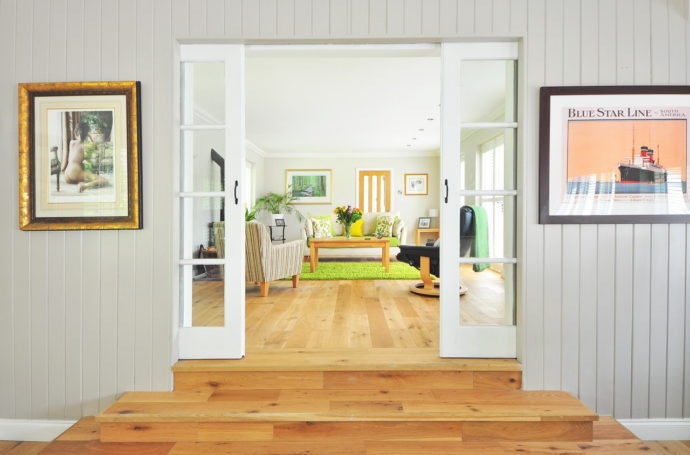If you like wooden floors, you are certainly not alone. In the UK, hardwood floors were so popular that at one stage that the Office of National Statistics included it in the national “basket” of goods, which is used to measure inflation. This was the case until 2014, when demand for real wood floors started to fall.
However, that does not mean that the Brits fell out of love with wooden floors, quite the opposite. What happened is that consumers realised that there were cheaper and easier ways for them to achieve the wooden floor look they desired.

Wood effect laminate flooring
In 1977, Perstorp launched a new form of flooring, called laminate flooring, in Sweden. It sold well there, but did not become available in Europe until 1984.
This innovative new product is made by overlaying a high quality digitised photo of a real wood floor onto wooden boards. A tough transparent finish is then sprayed over the top, which protects the photographic print.
The tougher the final layer is the longer the floor will last. Provided high quality images are used, this type of flooring is very realistic, as you can see by visiting the Discount Flooring Depot website.
Laminate flooring is graded. There are five different types from AC1 to AC5. The higher the rating the better the quality is. If you want to lay a new floor in a guest room where there is very little footfall AC1 grade laminate flooring is fine. However, if you are replacing the floor in a high traffic area, you will need to pay a little extra and lay AC4 or AC5 grade flooring.
Engineered woods
Engineered wood is made in a similar way to laminate flooring.
It is also made up of three layers. This type of flooring consists of a composite board that is overlaid with a veneer, which is protected by a transparent protective layer. The veneer is made from thin slices of real wood.
Usually 2mm is the thinnest and 9mm is the thickest. From an aesthetic point of view, it does not really matter how thick the veneer is, but it does affect how durable your floor is. Generally speaking, the thicker the veneer is the more hardwearing the floor will be. However, that is not the whole story. You also need to look at how thick, and durable, the transparent finish is. It is best to use the grading system to ensure that you choose engineered wood that is designed for the level of footfall your new floor is likely to be subjected to.
Which option is right for you?
Of course, if you want to you can still buy a traditional wooden floor. However, doing so can work out expensive. Especially if you need a professional to lay it for you, which is why consumers are increasingly choosing to use laminate flooring or engineered wood instead.
Which option is right for you is dependent on your budget, how long you want the floor to be down for, and how much work you are prepared to do to maintain your floors. Typically, real wood floors are the most expensive option. In addition, as you can see from this page, they require much more maintenance.


